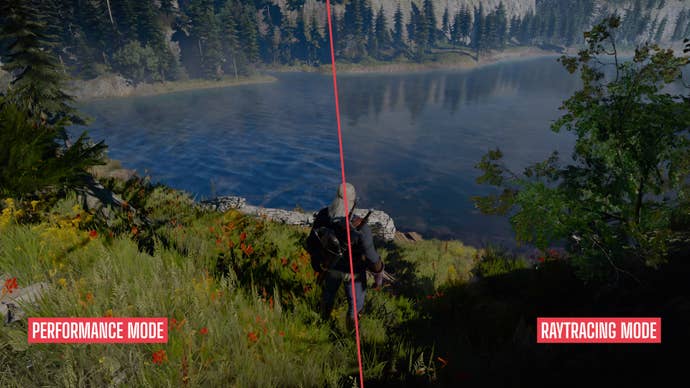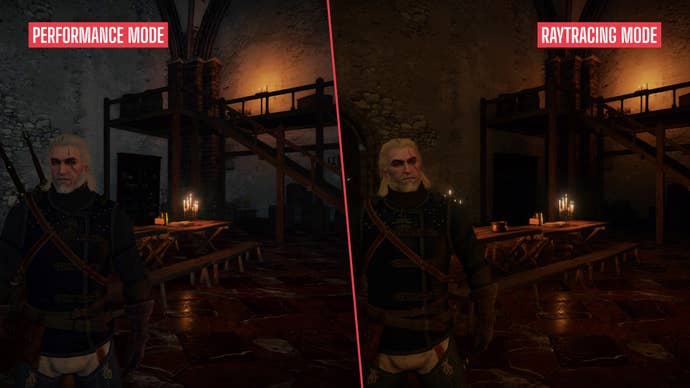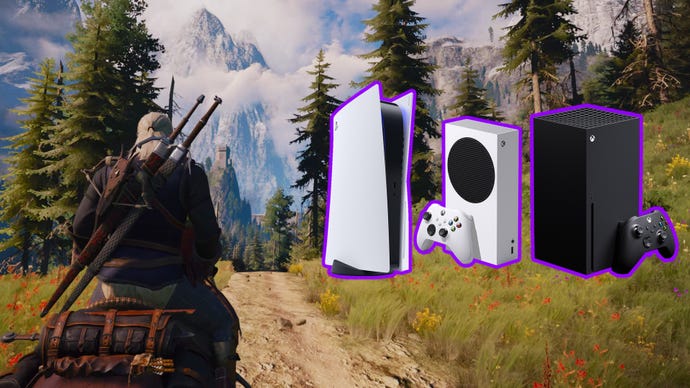The Witcher 3 Next-Gen Upgrade: Should I Choose Raytracing or Performance?
It's a long-awaited upgrade, but now console players are faced with a stark choice.
^Stay tuned for our video comparison of The Witcher 3's new raytracing and performance modes.
The Witcher 3’s next gen update, or “current gen update” if you’re one of the extremely well-adjusted people who keeps screaming about the PS6 not being announced yet whenever someone says “next gen”, is finally here after what feels like approximately two years since its announcement (it feels like that because it is that).
It is, as you rightly suspect, a refinement of something that was already beautiful. We’re talking nips and tucks here rather than a full re-work, which is absolutely fine: anything more substantial than that risks compromising the art direction, as we’ve seen countless times before when iconic games get a graphical refresh. In fact, if you weren’t A/B comparing them as we’ve done in some select scenes for the video above, you’d be hard pressed to notice much of a difference. Essentially, there’s more detail in the image – textures are higher quality, foliage is more dense, crowd simulation has been cranked up, and the level of detail fades off much further away from the camera now.

Those are the base improvements, but of course, because this is the PS5/Series X era, we now have to make the classic choice between raytracing and performance modes. The pros and cons are absolutely clear on paper: raytracing means more realistic lighting, shadows, and reflections but with the framerate capped at 30fps, and performance gives you a nice silky-smooth 60fps mode but with flatter lighting, less accurate shadows, and screen space reflections that basically look alright until you tilt the camera. It’s a tale as old as time.

So which should you choose? Well, for our money, performance mode has the edge here: those extra frames are vital for making the dodge n’ roll combat feel good – 30fps has a habit of making motion feel sluggish – and outside of indoor environments, the raytracing implementation here doesn’t really change the equation much. If you’re staring at a river, you’ll notice more refined detail in the ambient reflections. Puddles look nicer. In gloomy and damp indoor spaces like Kaer Morhen, glinting lights and deep, dark shadows give the environment a lot of drama that is otherwise flattened out by the less sophisticated lighting model of performance mode’s raster-based rendering.

But these are edge cases: in short, the bells and whistles you miss out on in performance mode are a much easier sacrifice to make than the dramatic performance hit that raytracing demands. Besides, the kind of raytracing we get on consoles is fairly nerfed anyway: I wouldn’t even consider it unless we had a nice hybrid Performance RT option a la Marvel’s Spider-Man. Alas, that isn’t always possible.
In conclusion: The Witcher’s next-or-current-gen update, with its suite of graphical touch-ups and quality of life enhancements, makes a beautiful and brilliant game slightly more beautiful and slightly more brilliant. But, as ever, don’t expect miracles on consoles – raytracing remains largely out of reach unless you have a beefy PC, and the compromises required to make it work on the cheerful box that sits under your TV just aren’t worth it.
Also, you can now have motion blur activated in performance mode without the sky glitching out, which was a weird bug with the Xbox One X build. If that’s a thing you even remember. Just me? OK.

